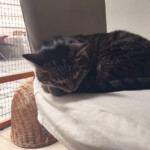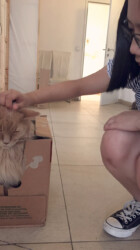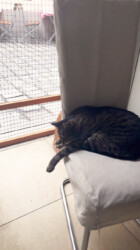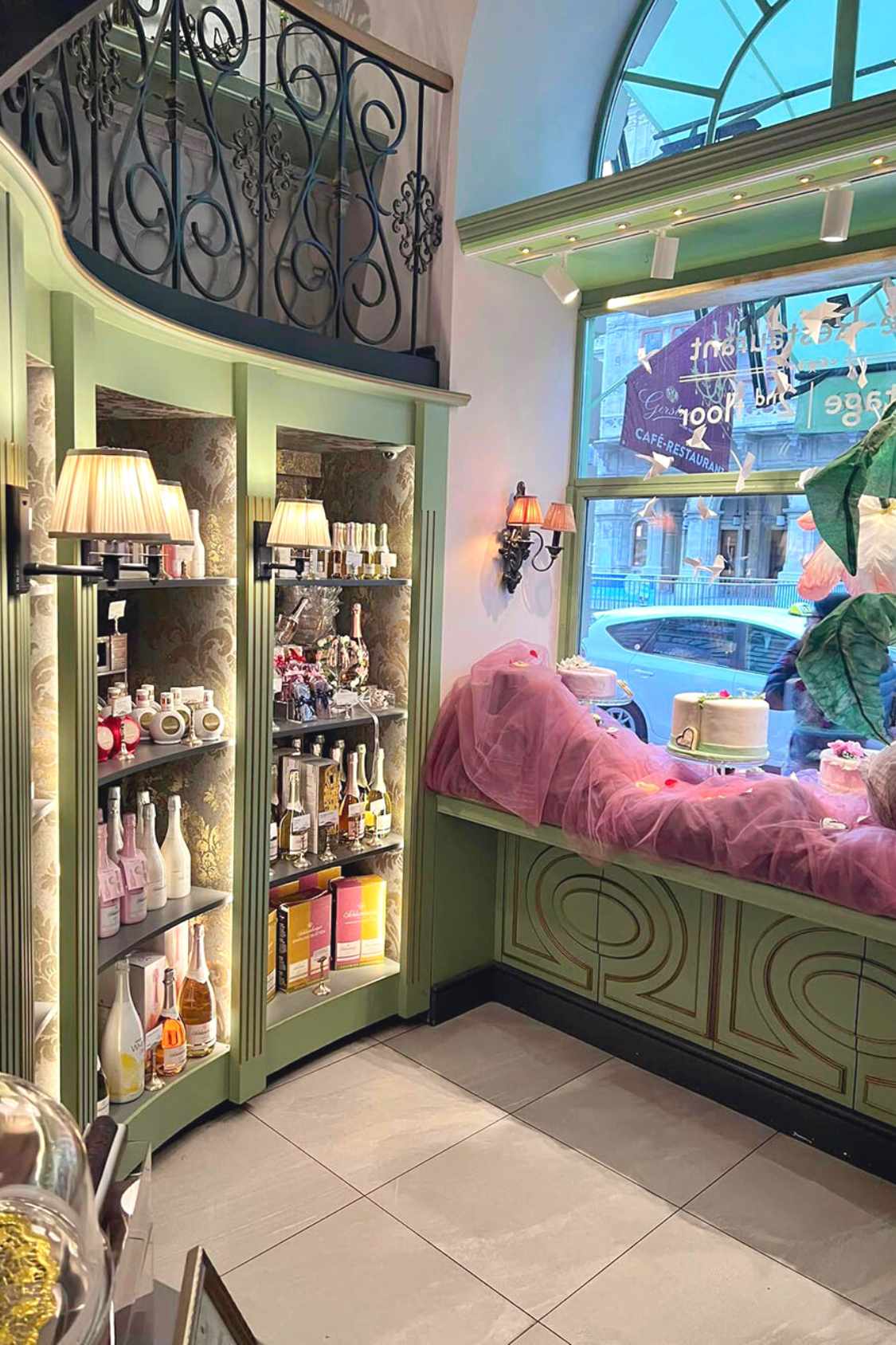
We’ve adopted three cats back in February, after enjoying catsitting two of our Aunt’s cats. We’ve long wanted to have pets, but our situation doesn’t allow us to. As someone who grew up with dogs, I know they need the space to run around – we live in a flat and it takes too much to take them out everyday. Our elder son son has cat allergies, apparently, and he also has asthma since he was two.
Having taken in two cats for three months, we consider of course how it would affect our son. However, he didn’t have an attack in the span of time that Mimi and Neshi were with us. So we read and looked upon studies after studies, and indeed, cats have good benefits for them kids.
 Benefits of Having Cats at Home
Benefits of Having Cats at Home
Contrary to popular belief, several studies have suggested that having cats as pets can provide benefits for children with asthma. Here are some potential advantages for kids, regardless if they asthma or not:
Reduced risk of developing allergies: Growing up with a cat from an early age may help reduce the risk of developing allergies, including asthma. Exposure to allergens in a controlled and gradual manner may help desensitize the immune system, leading to a decreased likelihood of developing allergies or asthma symptoms.
Emotional support: Cats can offer emotional support and companionship to children. Pets, including cats, have been shown to have a positive impact on mental well-being, helping to reduce stress, anxiety, and depression. This emotional support can be particularly beneficial for children with asthma, as they may face additional challenges in managing their condition.
Increased physical activity: Cats can encourage children to engage in physical activities, such as playing and chasing them around the house. Regular physical activity is important for overall health, and it can contribute to improved lung function and respiratory health in children with asthma.
Improved social skills: Pets, including cats, can serve as social catalysts for children. Having a cat may encourage social interaction and help children develop empathy, responsibility, and nurturing skills. This can be especially helpful for children with asthma who may experience limitations in participating in certain activities due to their condition.
Enhanced emotional resilience: Dealing with a chronic condition like asthma can be challenging for children. Having a cat as a companion can provide emotional support and comfort during difficult times, helping children develop emotional resilience and coping mechanisms to manage their condition.
Relaxation and stress reduction: Cats are known for their calming presence. Petting or stroking a cat has been shown to reduce stress and promote relaxation by triggering the release of oxytocin, a hormone associated with feelings of well-being. This can be particularly beneficial for children with asthma, as stress and anxiety can sometimes trigger asthma symptoms.
*It’s important to note that individual responses may vary, and some children with asthma may still be allergic to cats or experience worsened symptoms in their presence. It’s crucial to consult with a healthcare professional to assess the specific needs and risks associated with a child’s asthma condition before introducing a cat into the household. Additionally, maintaining a clean living environment, regularly vacuuming, and minimizing exposure to cat allergens can help mitigate potential risks.
We Love All Cats
Cats are often beloved companions known for their unique personalities, independence, and affectionate nature. Their presence can bring joy and comfort to many people’s lives. Whether you appreciate their playfulness, their purrs, or their calming presence, loving all cats is a testament to the special bond between humans and these incredible animals. And even though we already have our own, we still enjoy petting other cats – regardless of breed, whether adopted or bought, they all deserve to be loved.
That’s why visiting the Neko Café doesn’t feel like we were betraying our cats. Although they might be curious as to why we have different scents of other cats on us when we get home.
At the café, we had some snacks and we played a bit with the cats (as they allowed). As usual, matcha latte, the house cake, strawberry and matcha ice cream were our choices. Dad came later and had a cappuccino.
Guidelines When Visiting Cat Cafés
Visiting a cat cafe can be a delightful experience for cat lovers. To ensure a positive and enjoyable visit, here are some guidelines to keep in mind. If you notice the menu on the foremost photo, you will see that they have listed some guidelines in interacting with the cats (although in German). Here are some of what to consider:
Check the cafe’s policies: Before visiting a cat cafe, it’s important to review their policies and guidelines. Some cafes may require reservations or have specific time limits for visits. Make sure you understand and adhere to their rules to maintain a safe and comfortable environment for both the cats and visitors.
Respect the cats: Remember that the primary purpose of a cat cafe is to provide a safe and stress-free environment for the resident cats. Treat the cats with kindness, gentleness, and respect. Avoid rough handling, pulling tails, or waking them abruptly if they are resting.
Observe hygiene practices: Cat cafes typically have rules in place to maintain cleanliness and hygiene. Follow any instructions provided by the staff, such as washing your hands before entering the cat area, using hand sanitizers, or wearing disposable shoe covers. These measures help prevent the spread of germs and ensure the well-being of the cats.

Be mindful of the cats’ comfort: While interacting with the cats, pay attention to their body language and cues. If a cat shows signs of wanting space or retreats to a designated area, respect their need for privacy. Some cats may not enjoy being picked up or cuddled, so always ask the staff for guidance on appropriate ways to interact with the cats.
Avoid feeding the cats: In most cat cafes, the cats have designated feeding areas and specific diets. Refrain from offering them any food or treats without the staff’s permission. Feeding them unsuitable food can lead to health issues or disrupt their regular diet.
Keep noise levels low: Cats are generally sensitive to loud noises or sudden movements. Maintain a calm and quiet environment by speaking softly and avoiding excessive noise or sudden gestures that could startle the cats. This helps create a relaxed atmosphere where the cats can feel at ease.
Follow photography rules: Many cat cafes allow visitors to take photos, but it’s important to follow the cafe’s photography guidelines. Avoid using flash photography, as it can startle or distress the cats. Additionally, be mindful of the cats’ personal space and do not invade it while taking pictures.
Support the cafe: Cat cafes often rely on visitor contributions to cover the costs of caring for the cats. Consider purchasing food, drinks, or merchandise from the cafe to support their efforts in providing a nurturing environment for the resident cats.
 Going to Neko Café – traversing (lol) cobblestone paths.
Going to Neko Café – traversing (lol) cobblestone paths.
Blumenstockgasse 5, 1010
Update April 2023: The cats have retired and we have yet to visit the café’s new residents.
—-
--------------------------Book your Vienna stay here!--------------------------




















Leave a Reply